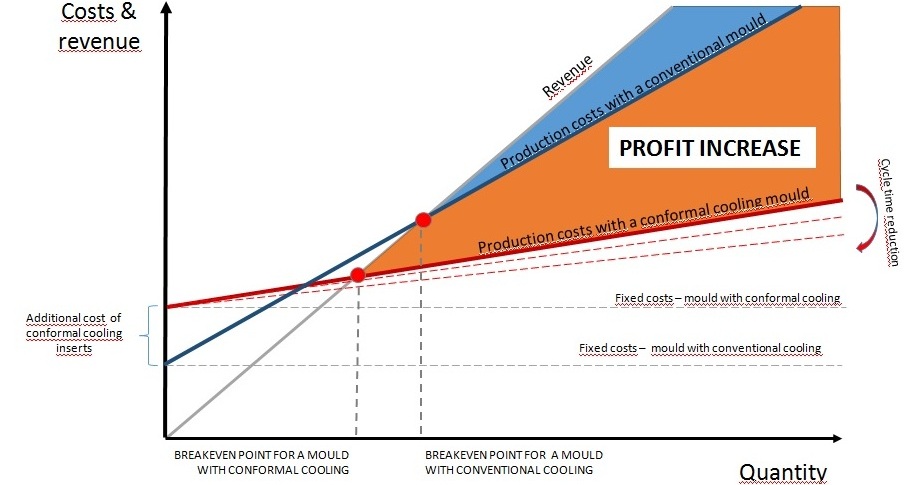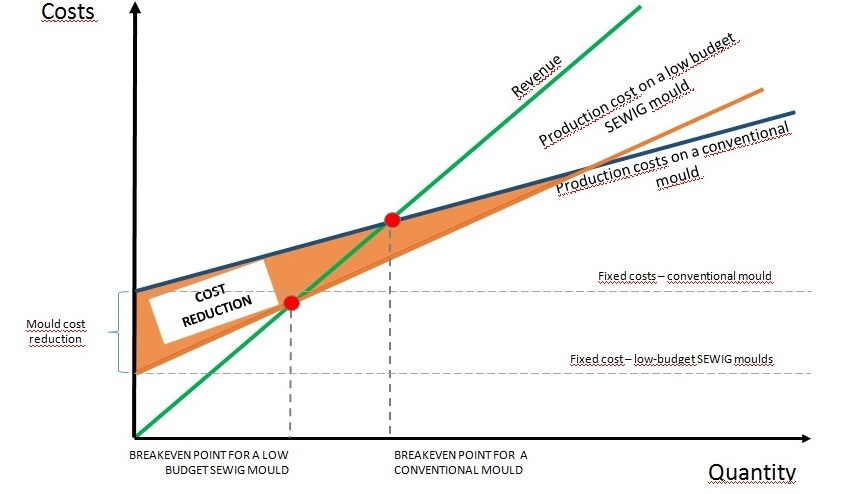Project Economic Analysis
The main factor influencing the price of a mould is its construction, which in turn, depends on a number of conditions imposed by the customer. Among them is the minimal part cost, the order size, risk related to entering a market with a new product, project lead time, part quality requirements or investment costs. Therefore, every design phase should be preceded by a detailed economic analysis, so that a client can achieve expected results without bearing additional or unnecessary costs.
In the case of high-volume production, where reducing cycle times by a fraction of a second translates into viable profits, the need to implement a balanced cooling system of moulding elements is evident. In such a situation, the return on investment is usually measured in months. With low volume production, the main goal is to reduce the entire investment cost rather than the price-per-part. It might be a daunting task, especially if quality concessions are not an option. In which case, low budget moulds in SEWIG technology are the optimal solution.
These two examples show how diverse expectations of investors can be. Regardless of the investment requirements, FADO offers optimised solutions based on a detailed financial analysis of a project.
Constructing moulds in a classic way is not always economically justified, especially if an investor needs upwards of thousands of parts. The SEWIG technology we created enables the production of low budget moulds without lowering part quality, and gives no limitations in terms of production quantity. The price of such moulds can be up to 40% lower, relative to their classic equivalents. Low budget moulds are also the key tool for minimalising the investment risk when the real market needs are unknown.

